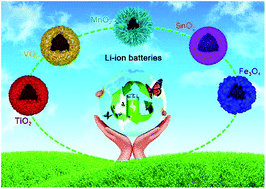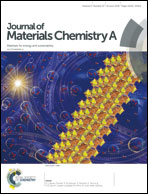Template-free synthesis of metal oxide hollow micro-/nanospheres via Ostwald ripening for lithium-ion batteries
Abstract
Transition metal oxide hollow structures have drawn tremendous attention as electrode materials for lithium-ion batteries (LIBs) due to their unique structural features and rich chemical properties. As electrode materials for LIBs, transition metal oxide hollow structures exhibit high specific capacity, excellent rate capability, and outstanding cycling performance. In the past few decades, unremitting efforts have been devoted to the design and synthesis of various transition metal oxide hollow structures with controlled shape, composition, and structural complexity to boost their electrochemical properties. Direct synthesis without the need for additional templates is preferred in practical applications due to significantly reduced production cost and the ease of scaling up. A number of template-free approaches have been developed for fabricating hollow structures on the basis of different mechanisms, including the Kirkendall effect, oriented attachment, and Ostwald ripening. Among them, Ostwald ripening, a process by which bigger particles form at the expense of tinier ones, has been verified to be an efficient method to produce hollow structures. In this review, we summarize the progress in the template-free synthesis of some binary transition metal oxide hollow structures (such as TiO2, VO2, MnO2, Fe3O4, and SnO2) based on the Ostwald ripening mechanism. A relationship between structural and compositional engineering with the enhanced electrochemical performance of transition metal oxide hollow structures is sought, in order to shed light on the development of advanced electrode materials for next-generation LIBs.

- This article is part of the themed collection: Recent Review Articles


 Please wait while we load your content...
Please wait while we load your content...